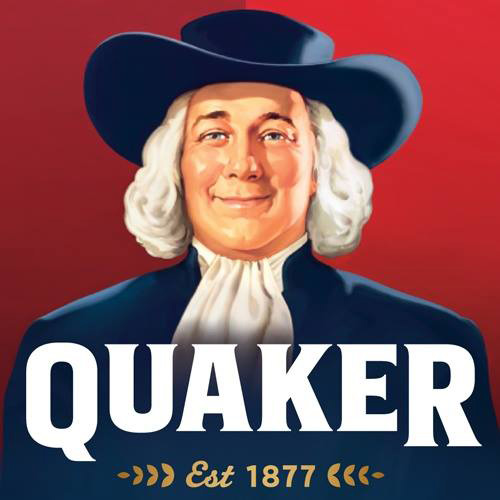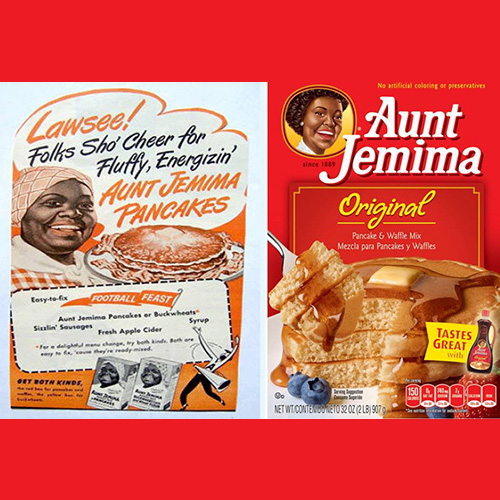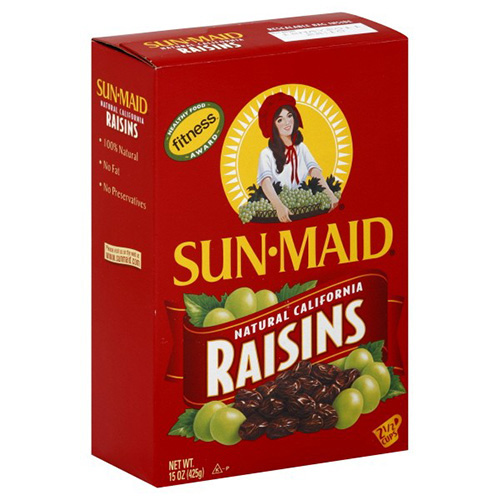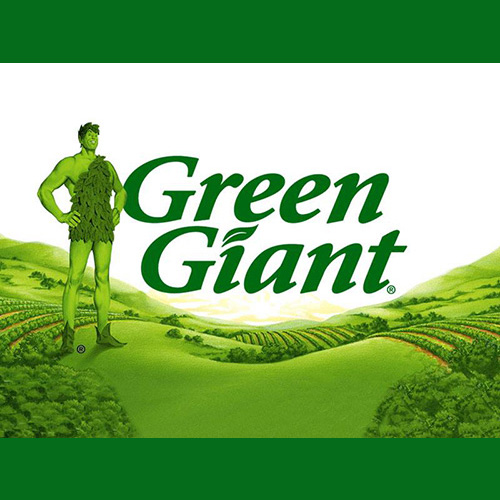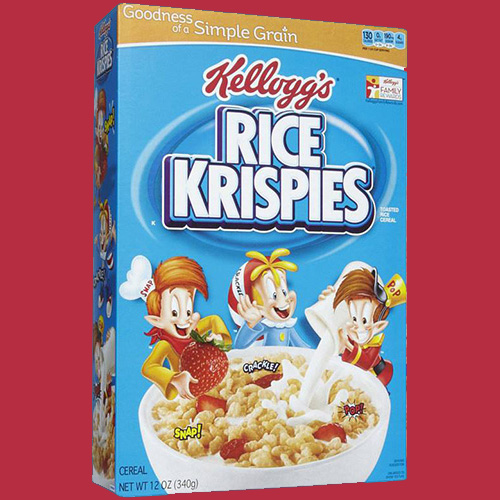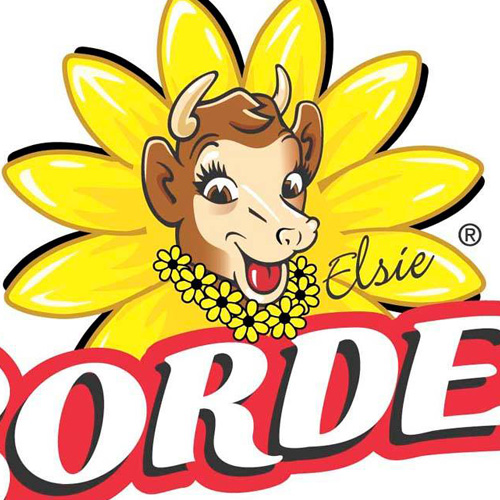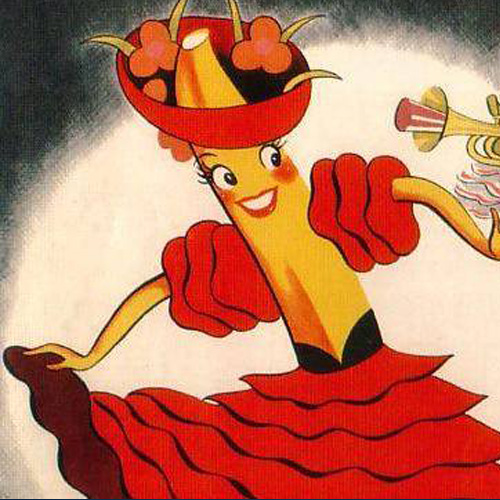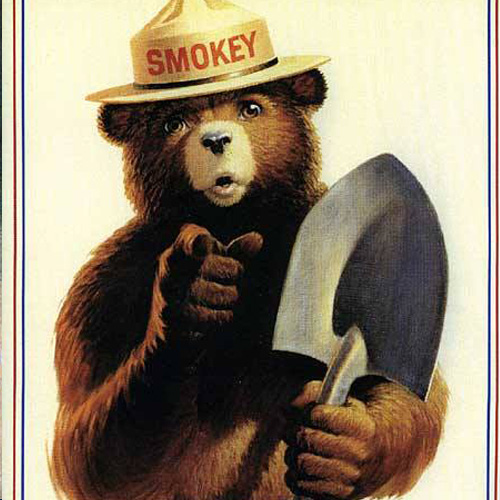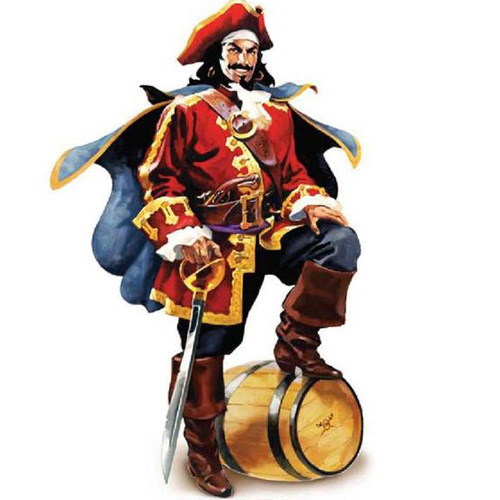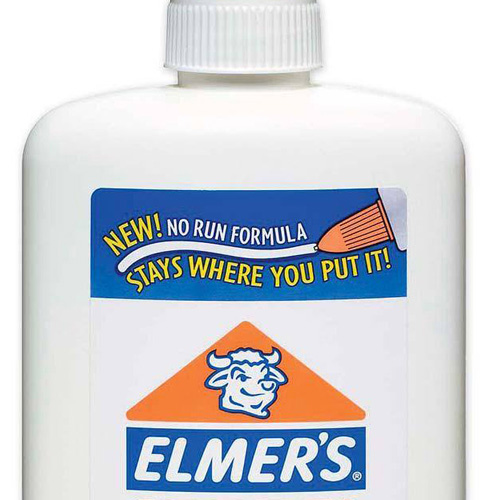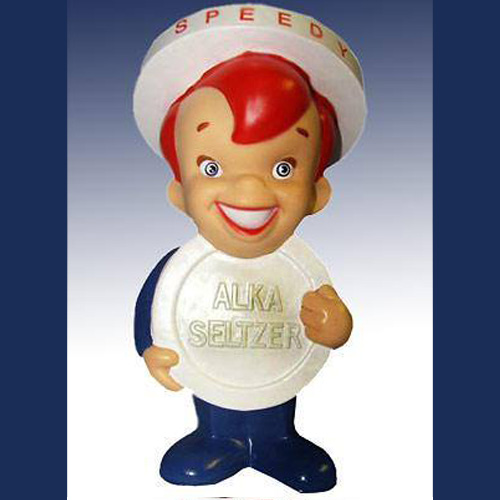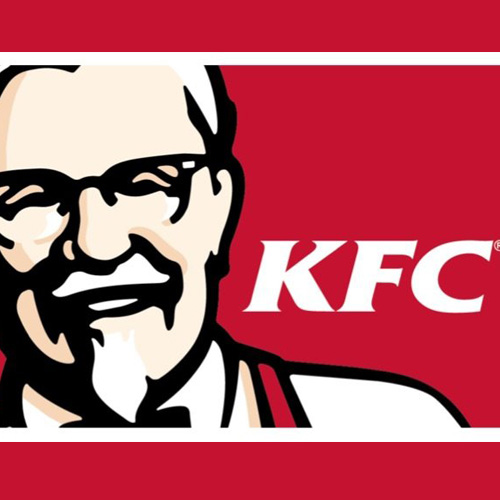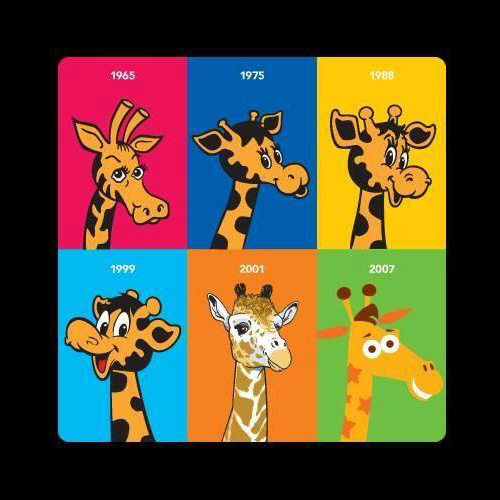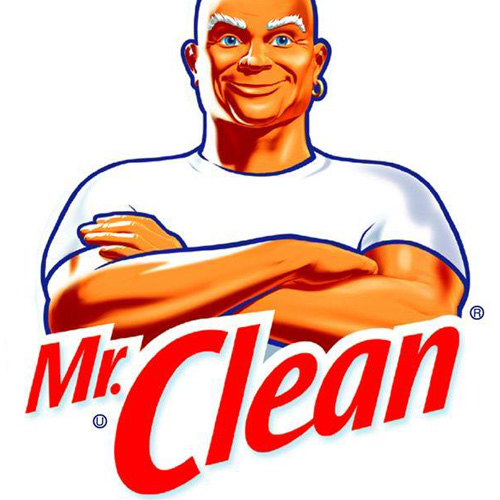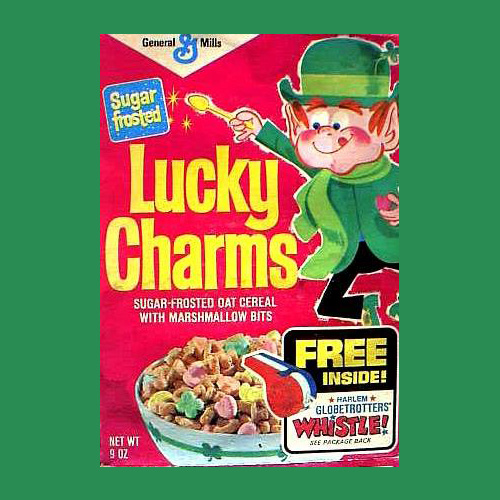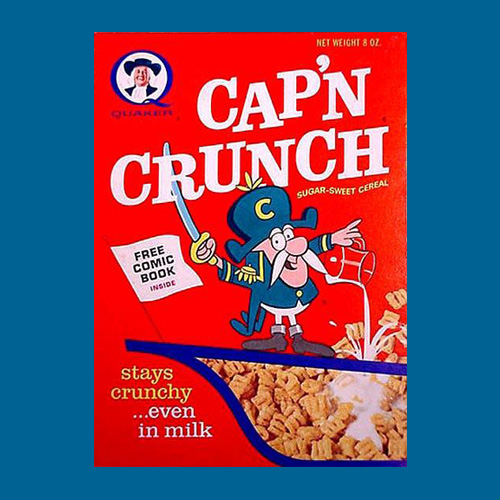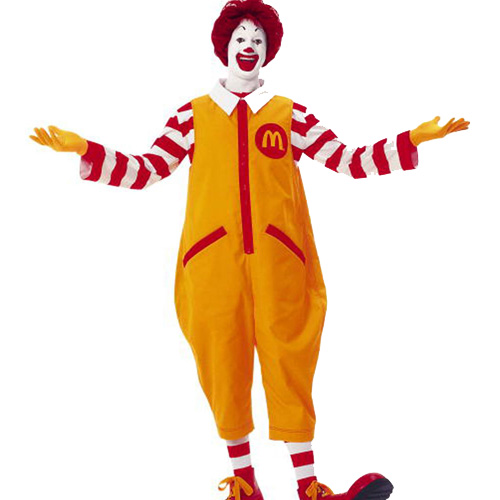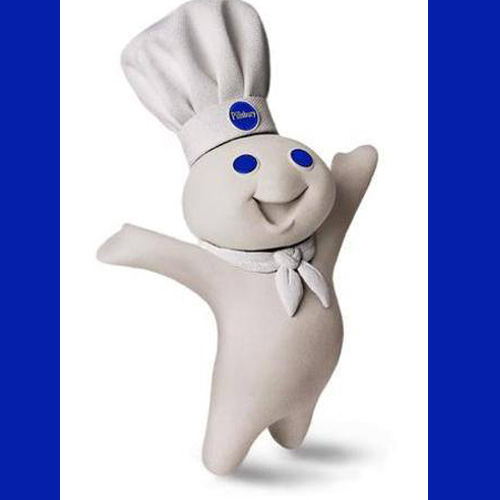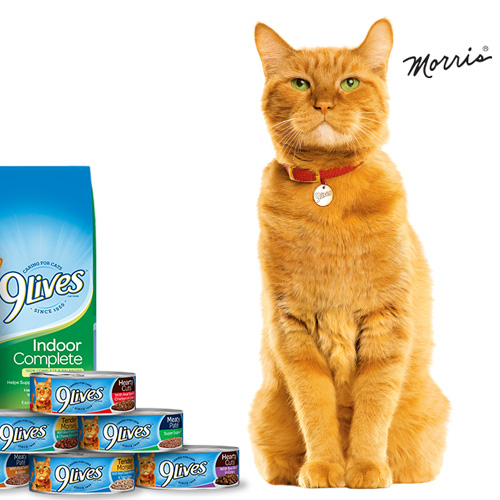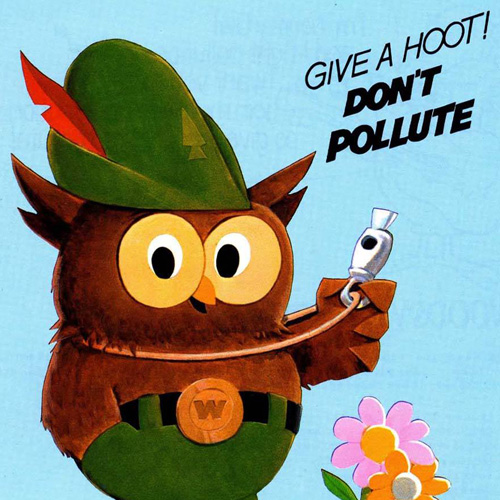The popularity of brand mascots dates back to the early 19th century. Brands discovered that using mascots improved brand recognition, and in many cases, left a lasting impression on consumers. Among the thousands of brand mascots that have come and gone over the years, a number stand out as truly iconic. Which are the most iconic brand mascots ever created? This article takes a look at some of the most influential brand mascots in America since 1877 by explaining their history, their evolution over time, the reaction of consumers, and why they’ve enjoyed such staying power.
1877: The Quaker Man for Quaker Oats
Born in 1877, the Quaker Oats mascot is one of the few human mascots who have reached iconic status. It’s often believed the company’s founders were Quakers, but they were not. Henry Seymour, co-founder of the company, randomly decided on the name after reading about Quakers in an encyclopedia one day. He thought Quakers sounded like nice people. The Quaker name represented purity, honesty, and integrity which were characteristics the company wanted to portray as their brand. Often rumored to be modeled after the famous Quaker William Penn, the company insists their mascot is not an actual person. Over the years, different artists have slightly changed his appearance, but at almost 140 years old, he hasn’t changed much at all.
1890: Aunt Jemima for Aunt Jemima Pancake Mix
Aunt Jemima pancake mix debuted in 1889, though the inspiration for the character came from a minstrel show that occurred in 1875. Charles Rutt and Charles G. Underwood, creators of the self-rising flour, named the recipe “Aunt Jemima’s recipe” after watching a minstrel show that featured a Southern mammy named Jemima. The original actress to portray Aunt Jemima for the company was a former slave from Kentucky named Nancy Green, who played the character from 1890 until her death in 1923. During this time, Green participated in events across the country dressed as a stereotypical mammy archetype. In addition, her image was repeated in marketing materials for the product line.
One of the most controversial brand mascots ever, the portrayal of Aunt Jemima often received criticism. During the 1950s and 1960s, both the civil rights and black power movements scrutinized the idea of Aunt Jemima. Chapters of the NAACP pressured schools and fairs not to invite the actresses playing Aunt Jemima to events. Under pressure, the Quaker Oats company (who bought the brand in 1926) ended their long marketing campaign using actresses, but the image remained on their products, though many changes have been made over the years. In the 1960s, Aunt Jemima’s skin was lightened and her face was thinned out. By 1968, the company had replaced the bandana she originally wore with a headband, and made her more youthful. The image continued to appear heavily in print advertisements but was removed from the plantation scenes that she had mostly appeared a part of in the past. Then in 1989, Quaker Oats removed the headband, added earrings and a pearl necklace, and positioned their brand icon as a “black working grandmother.”
Despite the controversy surrounding the brand’s image in the late 20th century, with a history that expands well over a century, Aunt Jemima remains one of the most successful advertising icons of all time.
1915: “Sun-Maid Girl” for Sun-Maid Raisins
In May 1915, a young girl named Lorraine Collett Petersen was asked to pose for a painting while holding a basket tray of fresh grapes. Lorraine had been outside drying her hair in the sun and was wearing a red sun bonnet (which was her mothers’ hat) when asked to pose. The result is the beautiful watercolor painting by artist Fanny Scafford that was originally the face of Sun-Maid Raisins, though the image has been altered during her raisin-reign over the past 100 years to make her appearance more reflective of the times.
The name Sun-Maid was created by advertising executive E.A. Berg in 1915. Berg believed that this name reflected raisins that were simply “made” in the California sun from fresh grapes. The classic “Sun-Maid Girl” trademark has been updated several times over the years but has always stayed true to the original image. An image which has been cherished by consumers around the world for generations.
Lorraine kept the painting and the bonnet until 1974 when she gave them both to Sun-Maid. The bonnet (now pink after years of fading) currently resides at the Smithsonian Institution in Washington, DC after being donated in 1988.
1916: Mr. Peanut for Planters Peanuts
Mr. Peanut was born in 1916 when 14 year-old Antonio Gentile won $5 for submitting a drawing of a peanut that resembled a person. Rumor has it that Commercial Artist, Andrew S. Wallach, enhanced the illustration with a monocle, top hat and cane to create the iconic image, though Planters has never positively identified the artist. Since the 1930s, Mr. Peanut has been a symbol of the entire peanut industry. He has appeared on almost every Planters package and advertisement since 1916, and is considered one of the best-known icons in advertising history. In 2006, Planters ran an online contest asking followers to vote to add either cufflinks, a bow tie, or a pocket watch to Mr. Peanut but voters declared “No change.” He was perfected 100 years ago.
However, in February of 2020, Planters decided it was time for the 104 year-old Mr. Peanut to die. Two ads ran during the Super Bowl. In a pregame ad, we saw Mr. Peanut sacrifice himself to save actors Wesley Snipes and Matt Walsh by plunging to his death. During the third quarter of the game, a second ad ran showing mourners at the funeral. The ad agency, VaynerMedia, explained the decision as a way of looking at the way people mourn fictional characters. “We did the unthinkable: we created a program and an idea where Mr. Peanut dies, and dies specifically sacrificing himself for his friends, which has always been a tenet of who he is and what he does — he always puts others first,” Mike Pierantozzi, group creative director at VaynerMedia, said.
1928: The Jolly Green Giant for Green Giant Company
When the Green Giant was born in 1928, he wasn’t very jolly. The Minnesota Valley Canning Company created a Giant who was hunched and scowling. Ad agency Erwin, Wasey & Co. came in and improved his posture, added a smile, and made his clothing light and leafy. By 1935, the name “Jolly” was added to the mascot, and by 1950, Minnesota Valley Canning Company changed its name to Green Giant Company. Marketing a Giant as a mascot proved to be difficult in the beginning. Early tv appearances left children crying at the sight of this “monster.” The marketing department soon realized that the Giant was most effective as either a silhouette or when viewed only partially. To further lighten up the Giant’s image, the team came up with his signature “Ho, ho, ho” and the jolly Giant is still standing tall today.
1928: Snap, Crackle and Pop for Kellogg’s Rice Krispies Cereal
The story of brothers Snap, Crackle, and Pop began in 1928 when the cereal first hit shelves. Initially, ads on the radio described Rice Krispies cereal as unique for the way it would “merrily snap, crackle and pop in a bowl of milk.” Artist Vernon Grant heard the jingle on the radio, sketched 3 different characters for each sound, then sent his work to the ad agency which was handling the Kellogg’s campaign at the time. Initially, Snap appeared solo on the side of cereal boxes. He was later joined by his brothers in 1941. In the beginning, they resembled boyish gnomes who all wore chef hats. Though they serve as the mascot for Rice Krispies, each of the three brothers displays unique characteristics. The oldest, Snap, is the only one who still wears a chef’s hat because he is a baker. The middle brother, Crackle, wears a red and white stocking cap, and is the considered the smartest of the three, though he has no known profession. Pop, as the youngest brother, wears a band leader’s hat, plays jokes on his siblings, and is a soldier. Over the years, the three brothers have been redesigned quite a bit, strategically removing their gnomish qualities and replacing them with more realistic facial features. In 1949, they got their first major makeover which included younger features and brighter colors. The second major makeover occurred in 1979 when their eyes were made larger. In 2000, as they celebrated the 80 year anniversary of Rice Krispies cereal, they were updated with a fresh look for the digital age.
Their career has been a busy one. They weren’t only used to promote Rice Krispies cereal. During their early career, they sponsored the children’s program “The Howdy Doody Show.” Then, during World War II, the trio of elves often were used in conservation messages. Later, in 1963, they achieved ultimate coolness status when they starred in a TV ad that featured a recording by The Rolling Stones. The trio celebrated their 80th birthdays in 2013, and continue on as iconic brand mascots for Rice Krispies cereal.
1928: “The Gerber Baby” for Gerber Strained Foods
In 1928, the Fremont Canning Company held a contest. They asked participants to draw a face of a baby that they could use as part of an upcoming baby food advertising campaign for their Gerber Strained Foods product. Artist Dorothy Hope Smith of Westport, Connecticut specialized in children’s drawings, and happened to live next door to a couple who had an adorable baby. She submitted an unfinished charcoal sketch of her neighbor’s baby, telling judges that if she won, she’d finalize the drawing. Gerber not only chose Smith’s sketch, they wanted no changes made to it. The image of a happy, healthy baby soon became the face that launched the Gerber brand. Within just 60 days of appearing in Good Housekeeping magazine, the “Gerber Baby” symbol became nationally recognized. In 1931, the Fremont Canning Company officially adopted the illustration as their trademark. Then in 1941, they changed their name to Gerber Products Company. As the face that launched a thousand baby food jars, the mascot’s influence on the Gerber brand remains strong. According to a 1998 survey, the Gerber Baby trademark was shown to be associated with the highest customer loyalty in the United States. She is the most iconic baby in history.
The Gerber baby’s identity was kept secret for years, though rumors circulated that the baby grew up and became famous. Celebrities such as Humphrey Bogart, Elizabeth Taylor, and Jane Seymour were all rumored to be the Gerber Baby. The baby is, in fact, Ann Turner Cook, a mystery novelist and retired English teacher. Ann was just a few months old when her neighbor sketched her. It wasn’t until the 1950s that the company paid Ann a lump sum of money for her role as their iconic brand mascot. CEO Marilyn Knox said “there is little doubt that Mrs Cook’s face played an instrumental role in the company’s success. You don’t even have to have the word Gerber on it. That face is honored as we’re doing the best for our child.”
Early 1930’s: Elsie the Cow for Borden Dairy
1944: Miss Chiquita for Chiquita Bananas
1944: Smokey Bear for the United States Forest Service
1944: Captain Morgan for The Captain Morgan Rum Company
In 1944, the Seagram Company started producing rum under the name The Captain Morgan Rum Company after former Seagram’s President, Sam Bronfman, visited the Caribbean and fell in love with the flavors of spiced rum. The marketing team decided to name the rum after the famous 17th century Caribbean pirate and privateer, Sir Henry Morgan, one of the most successful pirates of all time. Though the brand mascot displays a happy, go-lucky pirate in a red frock standing in a dashing pirate pose, the true Morgan was, in fact, a rather ruthless man who made life miserable for the Spanish Empire. Morgan was a pirate hired by the British during the mid-17th century to protect British interests in Jamaica, as well as fight the Spanish throughout the Caribbean during war time. Morgan is most famous for raiding the city of Portobello in 1667, sacking the towns of Gibralter and Maracaibo in 1668, and his attack on Panama in 1671. Morgan was so successful in his work for the British, he was made an Admiral in the British Royal Navy. He was eventually knighted and died in 1688 an extremely rich man.
In 2011, archaeologists discovered wreckage of one of Captain Morgan’s ships off the coast of Panama. Excavating the wreckage proved costly and funding began to run low. So The Captain Morgan Rum Company stepped in to help finance the project and see it to completion. For more than 70 years, the Captain Morgan Rum Company has remained committed to their famous mascot.
1951: Elmer the Bull for Elmer’s Glue-All
1951: Speedy for Alka-Seltzer
Do you recall the jingle “Plop, plop. Fizz, fizz. Oh, what a relief it is!” every time you drop an Alka-Seltzer tablet into a glass of water? You can thank Speedy for that! Speedy was created by the Wade Ad Agency in 1951 to serve as the baby-faced mascot for Alka-Seltzer. Little did they realize he would become one of the most iconic mascots in marketing history. According to Advertising Age, Alka-Seltzer TV ads during the 1950s and 1960s were among the most popular ads in the US, ranking number 13. Speedy starred in 212 commercials, some alongside stars such as Buster Keaton. By the time Speedy “retired” in 1964, Alka-Seltzer had invested $8.5 million a year in the Speedy marketing campaign, the largest investment in any single campaign during that era. By the mid-1960s his fame had spread far and wide, even reaching into Spanish-speaking countries where he was known as “Prontito.”
In 2008, a headline proclaiming the return of Speedy read “Bayer Brings Back ‘Reassuring’ Icon for Uncertain Times.” Marketing agency, Wolff-Olins, explained that this decision was made to appeal to younger audiences who hadn’t grown up with Speedy. “The markets today are both so uncertain and saturated with choice that we want reassuring characters to show us what’s tried, tested and true,” he said, noting that the interest in retro things taps into what helps motivate buyers during uncertain times. “There is an appetite for icons, myths and legends, and if properly executed, we can come to love them. They become anchor points, and we hold them very dear to our hearts.”
Interesting Fact: The original Speedy puppet was lost in 1971 and found 5 years later in a warehouse in Australia. Proving his iconic importance, he currently is kept in a vault in a Beverly Hills bank and is insured for $100,000.
1952: Colonel Sanders for Kentucky Fried Chicken
It’s not often that the owner of a company also serves as its brand mascot, but when it comes to Kentucky Fried Chicken, that’s exactly what happened. Colonel Harland David Sanders was an American businessman who founded Kentucky Fried Chicken, the fast food chicken restaurant chain (now known as KFC), in 1952. Sanders had been recommissioned as a Kentucky colonel in 1950 by Governor Lawrence Wetherby, and soon began to look the part. He grew a goatee, wore a string tie, and referred to himself as Colonel. This likeness would become the mascot and symbol of Kentucky Fried Chicken for more than 60 years. The roots of KFC began during the Great Depression when Sanders began selling fried chicken from a roadside restaurant in North Corbin, Kentucky. Pete Harman was the operator of one of South Salt Lake City, Utah’s largest restaurants and began selling Sander’s fried chicken to set his restaurant apart from all others in the area. The recipe proved to be so popular that sales more than tripled in the first year. Don Anderson, a sign painter hired by Harman, is said to have coined the name Kentucky Fried Chicken. Anderson is also the man behind the idea of the bucket meal and even the “finger lickin’ good” slogan. This success led to many opportunities for Sanders to sell his chicken to other franchises. In the early days, Sanders often slept in the back of his car while selling his chicken. The company quickly grew and KFC was one of the first fast food chains to expand internationally.
The company’s expansion across the United States and overseas was overwhelming for the aging Sanders. In 1964, at the age of 73, he sold the company to a group of investors. Sanders remained the company’s symbol after selling it. He also stayed active as the face of KFC. He logged 200,000 miles a year on the company’s behalf and filmed numerous TV commercials. For the final 20 years of his life, he only ever appeared in public dressed in his trademark white suit and tie. Even in death (Sanders passed away in 1980 at the age of 90) Sanders was buried in his characteristic white suit and black western string tie. Today, the original recipe is still kept under lock and key at the KFC headquarters.
1957: Geoffrey the Giraffe for Toys R Us
Before Toys R Us, there was Children’s Bargain Town, a company founded in 1948 by Charles Lazarus, a 25-year-old who’d dreamed of creating a child-oriented business. As a baby furniture store, Children’s Bargain Town opened in Washington, DC to cater to the post-war baby boom era. Other products were soon added to the inventory, most notably toys. Initially, the company’s mascot was known as Dr. G. Raffe who would proclaim “Toys are us!” in advertisements. When the focus of the store shifted to toys in 1957, the name was changed to Toys R Us, and Raffe was renamed Geoffrey shortly after in 1960 by a store sales associate.
Geoffrey’s popularity quickly grew. Soon there was an entire line of Geoffrey-themed merchandise. He began making appearances at events, and in 1973, starred in his first tv commercial. As the company grew, so did Geoffrey’s family. He was given a wife, Gigi, and two children, Geoffrey Junior and Baby Gee. While Gigi and Junior were featured in weekly ad circulars, Baby Gee was used primarily to promote baby merchandise.
The family was seen regularly in ads until the 1990s when Geoffrey got a makeover and was back promoting the brand solo. He also switched from being a father figure to a “big-hearted kid,” and used more as a mascot than as a promoter.
In 2001, Geoffrey had another change to appeal to kids of all ages. He became a real-life giraffe who could talk.
In 2007, Geoffrey was once again redesigned back to being a cartoon. His spots became stars to represent the “magic” that is Toys R Us. Through his many transformations, Geoffrey the Giraffe has successfully represented Toys R Us for more than 60 years proving he’s just an ageless fun-loving kid at heart.
Sadly, in 2018, Toys R Us announced they were closing their stores and filed for bankruptcy. Geoffrey the Giraffe officially retired after decades of welcoming shoppers. A sad photo of Geoffrey the Giraffe leaving an empty Toys R Us store went viral. Though, more recently, there’s been talk of Geoffrey being spotted wearing a cape that says “Back from Vacation.” Though he’s now supposedly attached to a company called Geoffrey’s Toy Box. Guess we’ll have to wait and see in this iconic mascot is back.
1957: Mr. Clean for Proctor & Gamble
Known as a man of few words but many muscles, Mr. Clean was born in 1957. The idea of a muscular man being the face of a Proctor & Gamble cleaning product was concieved by Harry Barnhart and Ernie Allen of the Chicago-based ad agency, Tathma-Laird & Kudner. Commercial artist, Richard Black, was brought in to draw a bald, burly man with a gold earring using a United States Navy sailor as the model. Originally conceived as a genie (early sketches showed Mr. Clean with an earring in his nose, but P&G decision makers moved it to his ear), the new mascot quickly helped the cleaning product become the number one household cleaner in the United States in just 6 months after he was introduced. Though he has spent most of his life as a drawn character, there was a brief stint during the 1960s when Mr. Clean appeared on television as a real man played by actor House Peters, Jr. In 1962, Proctor & Gamble ran a contest to “Give Mr. Clean a First Name” and the winner was Veritably, though most often he’s referred to simply as Mr. Clean.
After more than 50 years, Mr. Clean continues to resonate with consumers. “Mr. Clean is an idealized and standardized character,” said James Heaton, president, creative director of brand strategy firm Tronvig Group. “He fits the archetype of the strong man.” P&G communications manager Julia LaFeldt further explains the success of Proctor & Gamble’s most famous mascot, “Mr. Clean’s strength and well-groomed appearance fit what the product promises. One glance at him and you know he represents cleaning power.” He’s still keeping houses clean all over the country with his strong arms and confident smile.
1962: Sir Charms for General Mills Lucky Charms cereal
Lucky Charms cereal was created in 1962. The first cereal to include marshmallows in the recipe, it was marketed around the idea of charm bracelets. More commonly referred to as Lucky the Leprechaun, the mascot’s true name is Sir Charms (New Englanders know Lucky the Leprechaun as the Boston Celtics mascot). Sir Charms was born in 1963 and briefly called L.C. Leprechaun. Lucky is believed to have magic powers to change plain white marshmallows into mystical shapes. In addition to appearing on the Lucky Charms cereal box, Lucky has starred in Lucky Charms commercials since 1964. As he is chased by several children wanting his cereal, he utters his famous catch phrase, “They’re always after me Lucky Charms!” Arthur Anderson, an American actor who’s credits include Law & Order, Midnight Cowboy, and Courage the Cowardly Dog, played the voice of Lucky for 29 years. Anderson passed away in 2016. Sir Charms, aka Lucky the Leprechaun, celebrates a birthday each year on St. Patrick’s Day.
1963: Captain Horatio P. Crunch for Quaker Oats Cap’n Crunch cereal
Captain Horatio P. Crunch, the iconic brand mascot for Cap’n Crunch cereal, was born in response to a survey that showed children disliked soggy cereal. Jay Ward, an American creator of TV cartoon shows including “Rocky and Bullwinkle” and “Peabody and Sherman”, drew the captain and is said to have based the cartoon on himself. Depicted as a late 18th-century naval captain in a Revolutionary-style naval uniform, the honorable captain was charged with guarding the Crunch from Jean Le-Foote, an evil barefoot pirate. In 2013, a few major newspapers across the country reported that the three stripes on the mascot’s uniform indicated a rank of Commander and not the four needed on his uniform to be a Captain. The Wall Street Journal jokingly reported that the U.S. Navy had no record of Crunch and he was being investigated for impersonating a naval officer. Citing Cap’n Crunch as a prime example, a study from Cornell University in 2014 discovered that buyers show a 28% greater brand loyalty when a cereal box cover features a mascot making direct eye contact with the buyer.
1963: Ronald McDonald for McDonald’s
“The smile known around the world.” Ronald McDonald has been the face of the McDonalds restaurant chain since 1963. In terms of recognition among school-aged children in the United States, he is second only to Santa Claus. But, how did a clown come to be so closely associated with hamburgers? It began with veteran weatherman, Williard Scott. Before his weatherman days, Scott was a local radio personality in Washington, D.C. who played “Bozo the Clown” from 1959 through 1962 on the highly successful children’s program. When “Bozo the Clown” went off of the air, Scott was working for Oscar Goldstein and John Gibson, owners of two Washington, D.C. area McDonald’s franchises. Both Goldstein and Gibson felt this was the time to capitalize on the popularity of “Bozo the Clown,” so they had their ad agency create the character Ronald McDonald to star in three tv commercials for McDonalds. Scott was hired by Goldstein and Gibson to portray the character in these initial ads.
Over the years, many actors have portrayed the happy-go-lucky clown, including King Moody, an American actor who’s resume includes Get Smart, Bonanza, and Dragnet. Ronald has not only been used to market McDonalds to children for decades, he has worked tirelessly visiting children in hospitals, as well as attending regular events spreading messages on safety, literacy, anti-bullying and the importance of being active. He is also the face of Ronald McDonald Houses, a place where parents stay overnight while visiting their children in nearby chronic care facilities.
Because the intended target audience is children, Ronald McDonald has come under scrutiny in recent years due to unhealthy food options at McDonalds restaurants. He’s often referred to as the “Joe Camel” of fast food. Beginning in 2010, the Corporate Accountability International in Boston made a call for McDonalds to retire the clown in the wake of the childhood obesity epidemic. But the international restaurant chain declared they would not retire their mascot because, CEO Jim Skinner explained, Ronald McDonald was “an ambassador for good”. In 2014, McDonalds new CEO Don Thompson agreed that the clown does not encourage children to eat unhealthy foods. He’s merely been such a successful mascot for the company because he represents the “fun and happiness” of the McDonalds brand.
While the Corporate Accountability International has been unable to retire him mainly due to the fact that he is considered a national icon, the recent clown hysteria in the US leading up to Halloween 2016 threatens to do him in after more than 50 years. In early October 2016, the McDonalds corporation released a statement saying that due to the “current climate around clown sightings in communities,” they would limit the public appearances of their famous clown. Though no official word has come from the corporation, with the reduction of appearances in marketing and promotion for McDonalds over recent years, many wonder if this is actually the end of Ronald McDonald as the face of McDonalds restaurants. Let’s hope not.
1965: Poppin’ Fresh for Pillsbury
Poppin’ Fresh (aka the Pillsbury Doughboy) was born in a kitchen in Chicago in 1965. Rudy Perz, a copywriter for advertising agency Leo Burnett, was tasked with helping create an ad campaign for Pillsbury’s refrigerated dough product line. He imagined a living dough boy popping out of a Pillsbury Crescent Rolls can. To separate him from the rolls, Perz added a chef’s hat and a white scarf. He also gave him big blue eyes, and made him giggle when poked in the stomach. Originally conceived to be an animated character, Perz was influenced by a stop motion technique used for the opening credits of “The Dinah Shore Show”. Artist Milt Schaffer soon brought the doughboy to life using stop motion clay animation after creating a three-dimensional puppet. The cost to create the puppet was $16,000 (about $120,000 in today’s dollars) and, in October of 1965, he starred in his first commercial for Pillsbury Crescent Dinner Rolls. Since then, Poppin’ Fresh has appeared in more than 600 commercials, representing more than 50 products. In addition to his work for Pillsbury, he’s appeared in ads for MasterCard, Sprint, and as part of the Got Milk? ad campaign. He’s also appeared alongside such greats as the Jolly Green Giant, the Morton Salt Girl, and Count Chocula.
In 1999, the Pillsbury Doughboy was ranked number 6 among the Top 10 advertising icons of the 20th century by Advertising Age. Yet, his fame is not limited to packaging and tv. He’s taken part in the Macy’s Thanksgiving Day Parade since 2009, quickly becoming a favorite on the parade route. In 2014, a new balloon of Poppin’ Fresh was introduced, though it was an exact replica of the first. “This is the first time I think we’ve ever done this in history where we had such a great balloon design to begin with, that when it was time for a new balloon – the fabric wears out a little bit – we wanted to do exactly the same.” says John Piper, vice president of Macy’s Parade Studio. No need to mess with perfection. Today the Pillsbury Doughboy continues to rank as one of the most recognizable, and most loved, brand mascots of all time.
1969: Morris the Cat for Del Monte Foods
Not all brand mascots have been illustrations. Morris the Cat, the famous finicky orange tabby, has been the face of 9Lives cat food (a product of Del Monte Foods) since 1969. With the sardonic voice of John Irwin, Morris stared in 58 commercials between 1969-1978, and helped create one of the most successful and memorable advertising campaigns in television history. Over the years, 3 different cats have played Morris. The original Morris was ironically named Lucky when he was discovered in 1968 at the Hinsdale Humane Society in Chicago. In fact, all of the cats to play Morris over the years have been rescues. As the most successful Spokescat in history, Morris had his own personal assistant, received numerous marriage proposals from both felines and humans over the years, and has appeared in several movies including the Robert Altman film “The Long Goodbye” with Elliott Gould and “Shamus” with Burt Reynolds and Dyan Cannon, as well as appeared on “Good Morning America,” “Lifestyles of the Rich and Famous,” and “The Oprah Winfrey Show.” Once called the “Clark Gabel of cats,” Morris is said to have been the prototype for the Garfield comic strip. When the original Morris, aka Lucky, died in 1978, his obituary was seen in newspapers all over the country.
Though his early beginnings were in advertising, Morris the Cat is highly regarded for his volunteer work. He’s promoted responsible pet ownership, pet health and pet adoptions through animal shelters across the country, and is an accomplished author. In 2006, he kicked off a campaign known as Morris’ Million Cat Rescue when he adopted a kitten named Li’l Mo from a Los Angeles animal shelter. Throughout his career, Del Monte Foods has gone beyond using Morris as simply a mascot to promote their product. Never forgetting his roots, they have used Morris’ fame to bring awareness to the plight of cats and kittens in animal shelters. “9Lives believes that every cat deserves a forever home. We are so proud of the Morris’ Million Cat Rescue campaign, which successfully placed one million cats in new homes and helped educate the public on the importance of cat rescue.”
1970: Woodsy the Owl for the United States Forest Service
Not all mascots sell a product. Some fill an important role. We were first introduced to Woodsy the Owl in 1970 when he was created as part of a United States Forest Service campaign to promote conservation. Originally drawn by self-taught cartoonist, Harold Bell, Woodsy’s job was to advise against littering, encourage the planting of trees, and encourage protection of the environment. In the late 1960s, the environmental movement began to take off. In response to this, the US Forest Service developed a campaign focused around Woodsy as their spokesperson. With a friendly, caring, and wise demeanor, this owl was designed to target children ages 5 to 8. Serving as a mentor to children, Woodsy provided them with information about ways to protect nature. Instead of using a wise old owl who may have been viewed as lecturing, creators went for a young owl with a kind face who spoke directly to children. The Woodsy Owl Act was passed by Congress in 1974 to protect the image of the character. Woodsy now belongs to the USDA Forest Service and continues to collect royalties that help promote the message of conservation. His original slogan, “Give a hoot — don’t pollute!,” has been replaced with “Lend a hand — care for the land!” After more than 45 years, Woodsy continues on his tireless mission to raise awareness and protect our environment.

